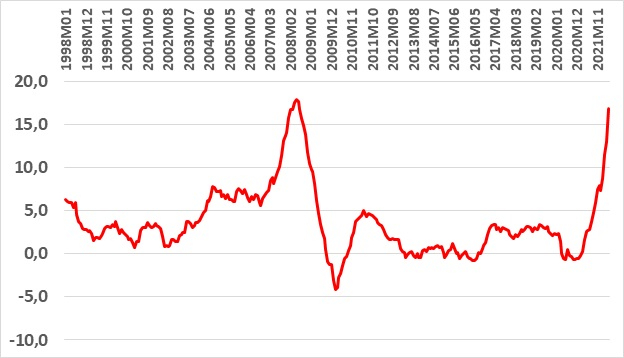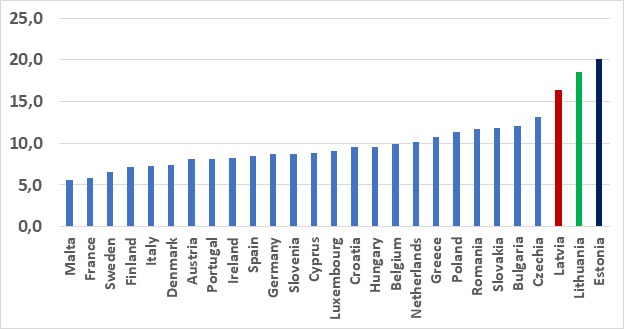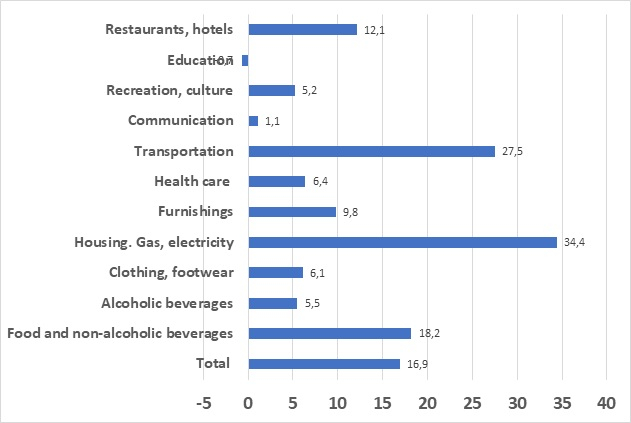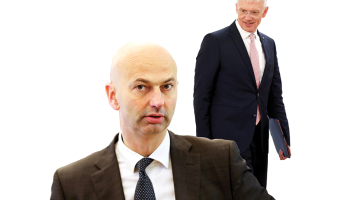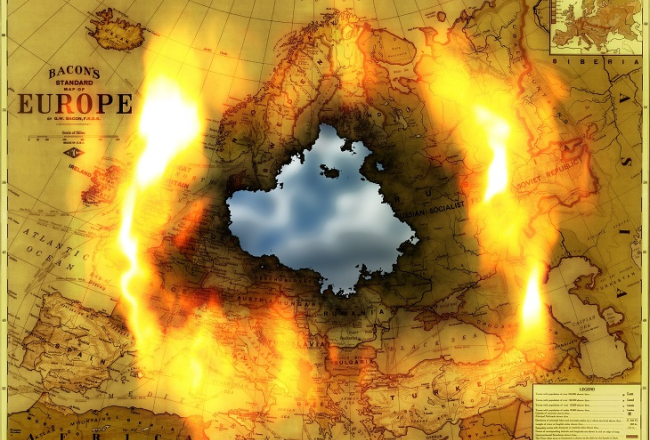
Ilustratīvs attēls
The Latvian inflation rate hit 16.9% in May 2022. In the past 25 years only three months – April, May and June 2008 – witnessed a higher inflation rate, see Figure 1.
This has elicited a lot attention and debate and so it should since the effect of this can be felt by every single individual and company.
My ten cents will follow below with a set of graphs attached after the text.
But there is nothing particularly mysterious about the high inflation rate:
1) The Putin effect, part 1: Energy prices have exploded due to sanctions but also due to post-pandemic growth in the world economy (see Figure 4 for oil prices and Figure 3 for Latvia where in particular the Transportation (e.g gasoline and diesel) and Housing (e.g. electricity and heating) items have shot up in prices.
2) The Putin effect, part 2: In particular grain prices have risen dramatically due to less exports of grain from Russia (sanctions) and from Ukraine (seriously hampered by the war). Figure 3 reflects this as seen from generally much higher food prices (that are also affected by higher costs of transportation of food items).
3) Energy prices affect inflation strongly due to lack of substitutes for it. There is a limit to how much we can save on heating and electricity whereas a surge in, say, tomato prices would make it easy for us to switch to salad or cucumbers or whatever. The reduced supply of energy due to sanctions moves up a steep demand curve, as we would call it, giving it a strong price effect.
4) And energy in its various forms is a non-trivial part of our consumption, especially in relatively poor (by EU standards) and northernly located countries such as the Baltics. This gives energy a much bigger share in the consumer price index than in e.g. Sweden (equally northernly located but richer) or Portugal (same level of income but in a warmer climate). And this helps explain why the highest inflation rates in the EU are here in the Baltics, see Figure 2.
5) Base effects also have played a role. True, oil prices are very high right now but they came from very low levels in 2020 (again, Figure 4) when oil demand was low due to the pandemic – we had deflation back then, i.e prices falling. Oil prices have since gone up factor six, obviously implying a huge impact on inflation.
6) Supply chains around the world still seem to lack repair – to me, the world economy has been eerily unprepared for a return to some sort of normalization.
Looking ahead, I am more interested in the following issues:
- a) How high will inflation go?
- b) What is the risk of a wage-price spiral?
- c) And when do we get some ECB action?
My own take (very unpleasant to provide since uncertainty is obviously very big at the moment) is that for a) not much more – energy prices indeed have soared but they will eventually have shifted to some higher level at which they do not add further to inflation (but are still very unpleasant, see again Figure 4). At ever-increasing prices new supplies (fracking, oil shale; what have you) would come into play, increase supply and put a lid on prices. And, although I can be very critical of the ECB, monetary policy in the Eurozone is in no way like monetary policy in Turkey….
I can be concerned about b) – the labour market is already tight here and of course some/many will seek compensation for a 16.9% inflation rate. I, quite frankly, wouldn’t mind a mild recession to ease the pressure in the labour market. Bank of Latia sees a slowdown of the economy (inevitable when energy eats so much of our purchasing power and leaves less to be spent on our own production) but still positive growth. Hmmm….
Regarding c), relatively soon, it seems, although I wonder if it will be too little and too late. The ECB has had to revise its forecasts for inflation upwards but still seems quite optimistic. Hmmm again…..
Figure 1: Latvian inflation rate, year-on-year, monthly data, 1998-I – 2022-V
Source: Statistics Latvia
Figure 2: Inflation rates, May 2022 over May 2021, EU 27
Source: Eurostat
Note: For Bulgaria, Czechia, Denmark, Croatia, Hungary, Poland, Romania, Sweden the inflation rates are for April 2022 over April 2021 as data for May was not available at the time of writing.
Figure 3: Inflation rate, Latvia, May 2022 over May 2021, main commodity groups
Source: Statistics Latvia
Figure 4: Oil prices (USD per barrel), past 25 years
Source: Trading Economics
Morten Hansen is Head of Economics Department at Stockholm School of Economics in Riga and Vice-Chairman of the Fiscal Discipline Council of Latvia.
Points of view expressed here at not necessarily those of the Fiscal Discipline Council of Latvia.
